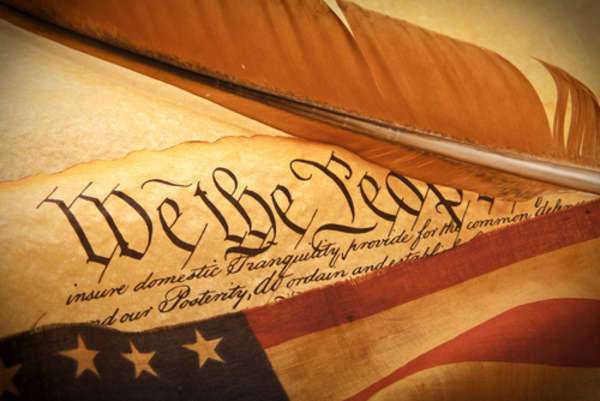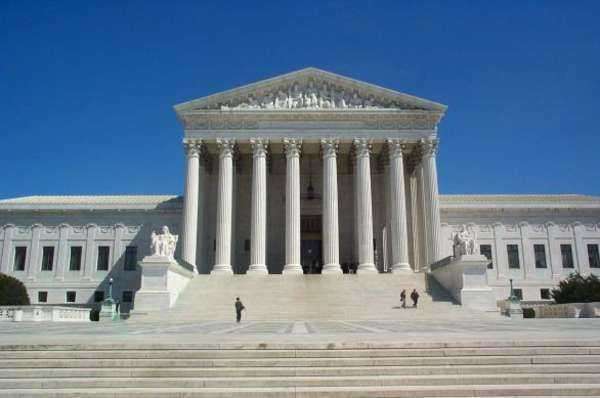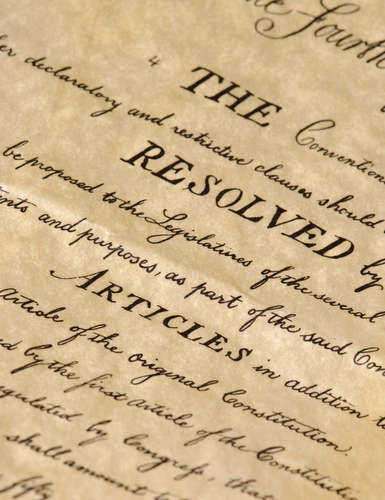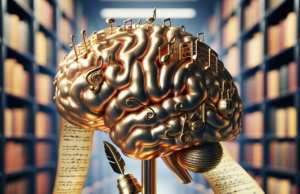
8th Amendment Simplified Meaning Through Cases
Introduction
The Eighth Amendment to the United States Constitution has had a profound impact on America’s legal landscape. It prohibits excessive bail and fines, as well as cruel and unusual punishment. The amendments’ language may seem simple, but its interpretation has been the subject of many significant court cases throughout American history. Its provisions have evolved over time with the changing social and legal landscape, and its impact on the American legal system has been enduring.
This article will explore how the Eighth Amendment has shaped significant court decisions, how its interpretation has changed over time, and its continued relevance in American law.
1789 – Ratification of the Eighth Amendment
The Eighth Amendment was ratified on December 15, 1791, along with the rest of the United States Constitution’s Bill of Rights. Its language reflects the colonial-era English common law’s influence, which prohibited excessive bails and fines for those awaiting trial. The prohibition of cruel and unusual punishment, however, was a broader expansion of previous prohibitions.
1825 – The first Eighth Amendment case
The case, United States v. Wiltberger, was the first Supreme Court case to examine the Eighth Amendment. The question at stake in this case was whether punishment could be considered criminal if the term was imposed after the commission of the crime. The Court decided that it could not, concluding that punishments could only be imposed “for crimes committed.”
1868 – Incorporation of the Bill of Rights
The Fourteenth Amendment, ratified in 1868, incorporates the Bill of Rights and its protections into the state governments. This amendment signifies that the Bill of Rights is applicable to the individual states, not merely the federal government.
1890s – The emergence of rehabilitation as a legitimate aim of incarceration
During the 1890s, rehabilitation began to be seen as a legitimate aim of incarceration in the United States. The Court recognized this concept and stated that imprisonment may be used to reform, teach, and deter behavior. However, the Eighth Amendment remained relevant because the punishment could not be deemed cruel and unusual regardless of the rehabilitation purpose.
1900s – The rise of the Progressive Era
The Progressive Era brought significant social and political changes to American society. In the early 1900s, the rise of Progressivism corresponded with changes in American penology that focused on the rehabilitation and reform of prisoners as a solution to crime. However, reform often proved challenging to achieve due to the growing public demand for harsh punishments.
1910 – The Eighth Amendment’s relevance in cases of capital punishment
In 1910, the Supreme Court used the Eighth Amendment to protect defendants from the excessive application of the death penalty. In Weems v. United States, the Court invalidated a sentence of 12 years of hard labor imposed on a defendant for falsifying an official document. The Court considered this punishment to be “barbarous,” incorrect, and excessive under the Eighth Amendment.
1912 – The Supreme Court recognizes the validity of the death penalty
In 1912, the Supreme Court upheld the constitutionality of the death penalty as an acceptable punishment for certain crimes in the case of Louisiana ex rel. Francis v. Resweber. The Court ruled that the use of the electric chair did not constitute cruel and unusual punishment for the convicted murderer.
1958 – Eighth Amendment prohibitions expand to cases of bail and fines in landmark cases
The Supreme Court heard two cases in 1958, Stack v. Boyle and Tate v. Short, which established the Eighth Amendment’s application to cases of excessive bail and fines. The Court held that excessive bail would unconstitutionally deny a defendant the right to a fair trial and may result in unnecessary economic hardship.
1962 – The Eighth Amendment’s reach broadens to the state level
The Supreme Court extended the Eighth Amendment’s protections to state laws and courts in Robinson v. California. The ruling held that a state could not criminalize drug addiction as a prolonged addiction is not a crime in itself.
1970 – The recognition of continued relevance of the Eighth Amendment in prison conditions
The Supreme Court’s ruling in Inmates of the Nebraska Penal and Correctional Complex v. Greenfield emphasized that the Eighth Amendment could apply to prison conditions that constituted cruel and unusual punishment. The decision stated that prisoners retain “the basic elements of human dignity inherent in the concept of ordered liberty.”
1972 – Furman v. Georgia, landmark case on the death penalty
The Furman v. Georgia landmark case invalidated all death penalty statutes in the United States. The case invalidated capital punishment on the grounds of arbitrariness and lack of uniformity in its application. The result was that the state courts had to revise and update their respective laws related to capital punishment, ultimately crafting more standardized guidelines in the process.
1976 – The restoration of capital punishment in Gregg v. Georgia
The Supreme Court reinstated the death penalty in 1976 in the case of Gregg v. Georgia, which sought to reinstate the death penalty in states with clear criteria for usage. The Court stated that capital punishment should only be imposed if the penalty applies to the most serious offenses and if the procedures to administer it conform to constitutional norms.
1983 – The constitutionality of mandatory minimum sentences questioned with Solem v. Helm
In the case of Solem v. Helm, the Supreme Court invalidated a life sentence without the possibility of parole for a seven-time, nonviolent offender. The Court held that the sentence, which was mandated by a three-strike-based habitual offender law, was cruel and unusual punishment under the Eighth Amendment.
2002 – The legality of executing minors challenged in Atkins v. Virginia
In Atkins v. Virginia, the Supreme Court concluded that the execution of individuals with intellectual disabilities constituted “cruel and unusual punishment,” as stated in the Eighth Amendment. The ruling held that it was unconstitutional to impose the death penalty on intellectually disabled individuals due to the severe impairments to their capacity for judgment.
2008 – Retroactive reductions in sentencing challenged in Kennedy v. Louisiana
The Supreme Court, in Kennedy v. Louisiana, struck down the imposition of the death penalty for offenders of child rape. The ruling held that imposing the death penalty on a defendant who was not responsible for a death and for child rape was “disproportionate and excessive” under the Eighth Amendment.
2020 – The question of solitary confinement’s constitutionality surface in United States v. Mays
In 2020, the Eighth Amendment’s prohibition on cruel and unusual punishment was used in defense of those in solitary confinement in the case of United States v. Mays. The ruling questioned the constitutionality of a warden’s decision to confine a defendant in segregation without a review of the evidence of his risk to safety.
Conclusion
The Eighth Amendment remains one of the United States Constitution’s most crucial provisions, having been significant in numerous landmark cases throughout American history. Its relevance has evolved with the changing legal, social, and cultural landscape in America, with its significance encompassing the scope of cruel and unusual punishment, the imposition of the death penalty, and mandatory minimum sentences. As the American legal system continues to adapt, it is clear that the Eighth Amendment will remain relevant in the adjudication of justice for the foreseeable future.
The 8th Amendment: Protecting Against Cruel and Unusual Punishment
Introduction
The 8th Amendment of the United States Constitution stands as a pillar of the American legal system, safeguarding individuals from excessive bail, fines, and most notably, cruel and unusual punishment. As we delve into the diverse legal landscapes of each U.S. state, we discover how this fundamental amendment is applied, interpreted, and revered across the nation.
Alabama: Balancing Justice and Punishment
In Alabama, the 8th Amendment’s prohibition against cruel and unusual punishment is closely interwoven with the state’s approach to balancing the scales of justice and ensuring that punishment remains proportionate to the crime. The state’s legal system acknowledges the importance of upholding human dignity while also acknowledging the gravity of criminal offenses.
The 8th Amendment’s mandate against cruel and unusual punishment guides Alabama’s courts in evaluating the constitutionality of various penalties. By doing so, the state strives to uphold the fundamental principle that punishment should not be excessive or inhumane, regardless of the severity of the crime.
Alaska: Rehabilitation and the 8th Amendment
In Alaska, the 8th Amendment’s protection against cruel and unusual punishment aligns with the state’s commitment to rehabilitation and reform within the criminal justice system. The state’s legal framework recognizes that punishment should serve a constructive purpose and not subject individuals to excessive or degrading treatment.
The 8th Amendment’s principles resonate in Alaska’s efforts to prioritize rehabilitation over punitive measures. By doing so, the state emphasizes the importance of respecting the dignity of individuals within the criminal justice system and focusing on measures that promote their reintegration into society.
Arizona: Sentencing Fairness and the 8th Amendment
In Arizona, the 8th Amendment’s mandate against cruel and unusual punishment is intertwined with the state’s dedication to ensuring fairness and proportionality in sentencing. The state’s legal system recognizes that punishments should be commensurate with the offense committed, upholding the principles of justice and human decency.
Arizona’s courts consider the 8th Amendment when evaluating the constitutionality of sentences, ensuring that they align with the state’s commitment to preventing excessive punishment. By adhering to these principles, the state strives to maintain a legal system that respects the rights of individuals and upholds the sanctity of the Constitution.
Arkansas: Rehabilitation and Restitution
In Arkansas, the 8th Amendment’s prohibition against cruel and unusual punishment is harmonized with the state’s emphasis on rehabilitation and restitution. The state’s legal framework recognizes that punishment should serve a rehabilitative purpose, focusing on transforming offenders and enabling their reintegration into society.
The 8th Amendment’s principles guide Arkansas in crafting penalties that avoid excessive or inhumane treatment while prioritizing the goal of rehabilitation. By doing so, the state’s legal system seeks to strike a balance between accountability and the opportunity for individuals to reform themselves.
California: Evolving Perspectives on Cruelty
In California, the 8th Amendment’s protection against cruel and unusual punishment reflects the state’s evolving perspectives on justice, human rights, and the treatment of individuals within the criminal justice system. The state’s legal framework recognizes the need to adapt to changing societal attitudes and ensure that penalties remain just and humane.
California’s courts consider the 8th Amendment when evaluating the constitutionality of punishments, taking into account the evolving understanding of what constitutes cruel and unusual treatment. By doing so, the state’s legal system endeavors to align with contemporary values while upholding the integrity of the Constitution.
Colorado: Rehabilitation and Human Dignity
In Colorado, the 8th Amendment’s prohibition against cruel and unusual punishment aligns with the state’s emphasis on rehabilitation and the preservation of human dignity. The state’s legal framework recognizes that punishment should aim to reform offenders and protect their fundamental rights.
The 8th Amendment’s principles guide Colorado’s approach to sentencing, ensuring that penalties are not excessive or degrading. By prioritizing rehabilitation and human dignity, the state’s legal system reflects a commitment to justice that respects the rights and inherent worth of every individual.
Connecticut: Balancing Justice and Humanity
In Connecticut, the 8th Amendment’s protection against cruel and unusual punishment is closely intertwined with the state’s dedication to striking a balance between justice and humanity within the criminal justice system. The state’s legal framework recognizes that punishment should serve legitimate penological purposes without subjecting individuals to undue suffering.
Connecticut’s courts consider the 8th Amendment when assessing the constitutionality of punishments, aiming to prevent excessive or degrading treatment. By doing so, the state’s legal system emphasizes the importance of upholding human rights while maintaining a just and effective criminal justice system.
Delaware: Accountability and the 8th Amendment
In Delaware, the 8th Amendment’s prohibition against cruel and unusual punishment aligns with the state’s commitment to accountability and justice. The state’s legal framework recognizes that punishments should be proportional to the crime committed and that excessive or inhumane treatment undermines the principles of fairness.
Delaware’s courts consider the 8th Amendment when evaluating the constitutionality of sentences, striving to ensure that penalties do not violate individuals’ rights or dignity. By upholding these principles, the state’s legal system reinforces the notion that accountability and justice must be balanced with humane treatment.
Florida: Punishment and Humanity
In Florida, the 8th Amendment’s protection against cruel and unusual punishment reflects the state’s approach to administering penalties that respect the humanity of individuals within the criminal justice system. The state’s legal framework acknowledges that punishment should not entail unnecessary suffering or degradation.
Florida’s courts consider the 8th Amendment when assessing the constitutionality of sentences, aiming to prevent cruel or excessively harsh treatment. By doing so, the state’s legal system underscores the importance of treating individuals with dignity and ensuring that punishments align with principles of justice.
Georgia: Fairness and the 8th Amendment
In Georgia, the 8th Amendment’s prohibition against cruel and unusual punishment aligns with the state’s commitment to fairness and proportionality within the criminal justice system. The state’s legal framework recognizes that punishments should be commensurate with the severity of the offense and that excessive or degrading treatment is antithetical to justice.
Georgia’s courts consider the 8th Amendment when evaluating the constitutionality of penalties, ensuring that punishments remain just and respectful of individuals’ rights. By adhering to these principles, the state’s legal system seeks to maintain a balance between accountability and humane treatment.
Hawaii: Human Dignity and the 8th Amendment
In Hawaii, the 8th Amendment’s protection against cruel and unusual punishment aligns with the state’s commitment to upholding human dignity within the criminal justice system. The state’s legal framework recognizes that individuals, regardless of their actions, retain inherent rights that should be respected.
The 8th Amendment’s principles guide Hawaii’s approach to sentencing, ensuring that penalties do not involve unnecessary suffering or degradation. By prioritizing human dignity, the state’s legal system seeks to administer punishments that reflect a balanced sense of justice while treating individuals with respect.
Idaho: Accountability and the 8th Amendment
In Idaho, the 8th Amendment’s prohibition against cruel and unusual punishment is intertwined with the state’s dedication to accountability and justice. The state’s legal system recognizes that punishments should be proportionate to the offense committed and should not involve excessive or degrading treatment.
Idaho’s courts consider the 8th Amendment when evaluating the constitutionality of sentences, aiming to prevent punishments that violate individuals’ rights or dignity. By upholding these principles, the state’s legal system emphasizes the importance of balancing accountability with the humane treatment of individuals.
Illinois: Rehabilitation and Humanity
In Illinois, the 8th Amendment’s protection against cruel and unusual punishment reflects the state’s emphasis on rehabilitation and preserving individuals’ humanity within the criminal justice system. The state’s legal framework recognizes that punishment should aim to reform offenders rather than subjecting them to undue suffering.
The 8th Amendment’s principles guide Illinois’s approach to sentencing, ensuring that penalties align with the goal of rehabilitation. By prioritizing humanity and rehabilitation, the state’s legal system reflects a commitment to justice that respects the rights and potential for change within each individual.
Indiana: Accountability and the 8th Amendment
In Indiana, the 8th Amendment’s prohibition against cruel and unusual punishment is aligned with the state’s commitment to accountability and just sentencing. The state’s legal framework recognizes that punishments should be proportionate to the offense and should not involve excessive or degrading treatment.
Indiana’s courts consider the 8th Amendment when assessing the constitutionality of penalties, aiming to prevent punishments that violate individuals’ rights or dignity. By adhering to these principles, the state’s legal system underscores the importance of maintaining a balance between accountability and the humane treatment of individuals.
Iowa: Fairness and the 8th Amendment
In Iowa, the 8th Amendment’s protection against cruel and unusual punishment reflects the state’s commitment to fairness and proportionality within the criminal justice system. The state’s legal framework recognizes that punishments should be commensurate with the severity of the crime and should not involve unnecessary suffering.
Iowa’s courts consider the 8th Amendment when evaluating the constitutionality of sentences, aiming to prevent punishments that are excessively harsh or degrading. By doing so, the state’s legal system emphasizes the importance of maintaining justice while respecting the rights and dignity of individuals.
Kansas: Rehabilitation and Accountability
In Kansas, the 8th Amendment’s prohibition against cruel and unusual punishment aligns with the state’s focus on rehabilitation and accountability within the criminal justice system. The state’s legal framework recognizes that punishment should serve a rehabilitative purpose, fostering the transformation of offenders.
The 8th Amendment’s principles guide Kansas’s approach to sentencing, ensuring that penalties do not involve excessive or inhumane treatment. By prioritizing rehabilitation and accountability, the state’s legal system seeks to create a balanced approach to justice that respects the rights and potential for growth within each individual.
Kentucky: Humanity and the 8th Amendment
In Kentucky, the 8th Amendment’s protection against cruel and unusual punishment reflects the state’s emphasis on preserving humanity and upholding individuals’ inherent worth within the criminal justice system. The state’s legal framework recognizes that punishment should not entail undue suffering or degradation.
Kentucky’s courts consider the 8th Amendment when assessing the constitutionality of sentences, aiming to prevent punishments that violate individuals’ rights or dignity. By upholding these principles, the state’s legal system underscores the importance of treating individuals with respect while maintaining justice.
Louisiana: Accountability and Fairness
In Louisiana, the 8th Amendment’s prohibition against cruel and unusual punishment aligns with the state’s dedication to accountability and fairness within the criminal justice system. The state’s legal framework recognizes that punishments should be proportional to the offense and should not involve excessive or degrading treatment.
Louisiana’s courts consider the 8th Amendment when evaluating the constitutionality of penalties, ensuring that punishments remain just and respectful of individuals’ rights. By adhering to these principles, the state’s legal system seeks to maintain a balance between accountability and the humane treatment of individuals.
Maine: Humanity and the 8th Amendment
In Maine, the 8th Amendment’s protection against cruel and unusual punishment reflects the state’s commitment to preserving humanity and respecting the rights of individuals within the criminal justice system. The state’s legal framework recognizes that punishment should not entail unnecessary suffering or degradation.
The 8th Amendment’s principles guide Maine’s approach to sentencing, ensuring that penalties align with the goal of maintaining human dignity. By prioritizing humanity and justice, the state’s legal system seeks to administer punishments that respect the rights and inherent worth of each individual.
Maryland: Rehabilitation and Accountability
In Maryland, the 8th Amendment’s prohibition against cruel and unusual punishment is closely connected to the state’s focus on rehabilitation and accountability within the criminal justice system. The state’s legal framework recognizes that punishment should serve a rehabilitative purpose and promote the transformation of offenders.
Maryland’s courts consider the 8th Amendment when evaluating the constitutionality of sentences, aiming to prevent punishments that violate individuals’ rights or dignity. By upholding these principles, the state’s legal system emphasizes the importance of rehabilitation and accountability in fostering a just and effective criminal justice system.
Massachusetts: Fairness and Humanity
In Massachusetts, the 8th Amendment’s protection against cruel and unusual punishment reflects the state’s commitment to fairness and humanity within the criminal justice system. The state’s legal framework recognizes that punishment should be commensurate with the offense and should not involve unnecessary suffering or degradation.
Massachusetts’s courts consider the 8th Amendment when evaluating the constitutionality of sentences, aiming to prevent punishments that are excessively harsh or violate individuals’ rights. By upholding these principles, the state’s legal system emphasizes the importance of maintaining justice while respecting the inherent worth of individuals.
Michigan: Rehabilitation and Accountability
In Michigan, the 8th Amendment’s prohibition against cruel and unusual punishment aligns with the state’s focus on rehabilitation and accountability within the criminal justice system. The state’s legal framework recognizes that punishment should serve a rehabilitative purpose and encourage the transformation of offenders.
The 8th Amendment’s principles guide Michigan’s approach to sentencing, ensuring that penalties do not involve excessive or degrading treatment. By prioritizing rehabilitation and accountability, the state’s legal system seeks to create a balanced approach to justice that respects the rights and potential for change within each individual.
Minnesota: Humanity and Fairness
In Minnesota, the 8th Amendment’s protection against cruel and unusual punishment reflects the state’s emphasis on humanity and fairness within the criminal justice system. The state’s legal framework recognizes that punishment should not entail undue suffering or degradation and that individuals have inherent rights that must be respected.
Minnesota’s courts consider the 8th Amendment when assessing the constitutionality of punishments, aiming to prevent violations of individuals’ rights or dignity. By upholding these principles, the state’s legal system underscores the importance of justice that respects the humanity and rights of individuals.
Mississippi: Accountability and the 8th Amendment
In Mississippi, the 8th Amendment’s prohibition against cruel and unusual punishment aligns with the state’s commitment to accountability and justice within the criminal justice system. The state’s legal framework recognizes that punishments should be proportional to the offense and should not involve excessive or degrading treatment.
Mississippi’s courts consider the 8th Amendment when evaluating the constitutionality of penalties, ensuring that punishments remain just and respectful of individuals’ rights. By adhering to these principles, the state’s legal system seeks to maintain a balance between accountability and the humane treatment of individuals.
Missouri: Rehabilitation and Humanity
In Missouri, the 8th Amendment’s protection against cruel and unusual punishment reflects the state’s emphasis on rehabilitation and the preservation of humanity within the criminal justice system. The state’s legal framework recognizes that punishment should serve a rehabilitative purpose and encourage the transformation of offenders.
The 8th Amendment’s principles guide Missouri’s approach to sentencing, ensuring that penalties do not involve excessive or degrading treatment. By prioritizing rehabilitation and humanity, the state’s legal system reflects a commitment to justice that respects the rights and potential for change within each individual.
Montana: Fairness and Accountability
In Montana, the 8th Amendment’s prohibition against cruel and unusual punishment aligns with the state’s dedication to fairness and accountability within the criminal justice system. The state’s legal framework recognizes that punishments should be commensurate with the severity of the crime and should not involve unnecessary suffering.
Montana’s courts consider the 8th Amendment when evaluating the constitutionality of sentences, aiming to prevent punishments that are excessively harsh or degrading. By doing so, the state’s legal system emphasizes the importance of maintaining justice while respecting the rights and dignity of individuals.
Nebraska: Rehabilitation and Justice
In Nebraska, the 8th Amendment’s protection against cruel and unusual punishment reflects the state’s focus on rehabilitation and justice within the criminal justice system. The state’s legal framework recognizes that punishment should aim to transform offenders and enable their reintegration into society.
The 8th Amendment’s principles guide Nebraska’s approach to sentencing, ensuring that penalties align with the goal of rehabilitation. By prioritizing rehabilitation and justice, the state’s legal system seeks to create a balanced approach that respects the rights and potential for change within each individual.
Nevada: Accountability and Humanity
In Nevada, the 8th Amendment’s prohibition against cruel and unusual punishment aligns with the state’s dedication to accountability and humanity within the criminal justice system. The state’s legal framework recognizes that punishment should be proportional to the offense and should not involve excessive or degrading treatment.
Nevada’s courts consider the 8th Amendment when evaluating the constitutionality of penalties, aiming to prevent punishments that violate individuals’ rights or dignity. By adhering to these principles, the state’s legal system underscores the importance of maintaining a balance between accountability and the humane treatment of individuals.
New Hampshire: Human Dignity and Fairness
In New Hampshire, the 8th Amendment’s protection against cruel and unusual punishment reflects the state’s commitment to upholding human dignity and fairness within the criminal justice system. The state’s legal framework recognizes that punishment should not entail unnecessary suffering or degradation.
The 8th Amendment’s principles guide New Hampshire’s approach to sentencing, ensuring that penalties align with the goal of maintaining human dignity. By prioritizing human dignity and fairness, the state’s legal system seeks to create a just and humane approach to administering punishment.
New Jersey: Rehabilitation and Accountability
In New Jersey, the 8th Amendment’s prohibition against cruel and unusual punishment is closely connected to the state’s focus on rehabilitation and accountability within the criminal justice system. The state’s legal framework recognizes that punishment should serve a rehabilitative purpose and encourage the transformation of offenders.
New Jersey’s courts consider the 8th Amendment when evaluating the constitutionality of sentences, aiming to prevent punishments that violate individuals’ rights or dignity. By upholding these principles, the state’s legal system emphasizes the importance of rehabilitation and accountability in fostering a just and effective criminal justice system.
New Mexico: Rehabilitation and Humanity
In New Mexico, the 8th Amendment’s protection against cruel and unusual punishment reflects the state’s emphasis on rehabilitation and preserving the humanity of individuals within the criminal justice system. The state’s legal framework recognizes that punishment should aim to reform offenders rather than subjecting them to unnecessary suffering.
The 8th Amendment’s principles guide New Mexico’s approach to sentencing, ensuring that penalties do not involve excessive or degrading treatment. By prioritizing rehabilitation and humanity, the state’s legal system reflects a commitment to justice that respects the rights and potential for change within each individual.
New York: Accountability and Fairness
In New York, the 8th Amendment’s prohibition against cruel and unusual punishment aligns with the state’s commitment to accountability and fairness within the criminal justice system. The state’s legal framework recognizes that punishment should be commensurate with the offense and should not involve excessive or degrading treatment.
New York’s courts consider the 8th Amendment when evaluating the constitutionality of sentences, aiming to prevent punishments that are excessively harsh or violate individuals’ rights. By upholding these principles, the state’s legal system emphasizes the importance of maintaining justice while respecting the inherent worth of individuals.
North Carolina: Humanity and Rehabilitation
In North Carolina, the 8th Amendment’s protection against cruel and unusual punishment reflects the state’s emphasis on humanity and rehabilitation within the criminal justice system. The state’s legal framework recognizes that punishment should serve a constructive purpose and encourage the transformation of offenders.
The 8th Amendment’s principles guide North Carolina’s approach to sentencing, ensuring that penalties do not involve excessive or degrading treatment. By prioritizing rehabilitation and humanity, the state’s legal system seeks to create a balanced approach to justice that respects the rights and potential for change within each individual.
North Dakota: Accountability and the 8th Amendment
In North Dakota, the 8th Amendment’s prohibition against cruel and unusual punishment aligns with the state’s dedication to accountability and justice within the criminal justice system. The state’s legal framework recognizes that punishments should be proportional to the offense and should not involve excessive or degrading treatment.
North Dakota’s courts consider the 8th Amendment when evaluating the constitutionality of penalties, ensuring that punishments remain just and respectful of individuals’ rights. By adhering to these principles, the state’s legal system seeks to maintain a balance between accountability and the humane treatment of individuals.
Ohio: Rehabilitation and Humanity
In Ohio, the 8th Amendment’s protection against cruel and unusual punishment reflects the state’s focus on rehabilitation and the preservation of humanity within the criminal justice system. The state’s legal framework recognizes that punishment should serve a rehabilitative purpose and encourage the transformation of offenders.
The 8th Amendment’s principles guide Ohio’s approach to sentencing, ensuring that penalties do not involve excessive or degrading treatment. By prioritizing rehabilitation and humanity, the state’s legal system reflects a commitment to justice that respects the rights and potential for change within each individual.
Oklahoma: Fairness and Accountability
In Oklahoma, the 8th Amendment’s prohibition against cruel and unusual punishment aligns with the state’s dedication to fairness and accountability within the criminal justice system. The state’s legal framework recognizes that punishments should be commensurate with the severity of the offense and should not involve unnecessary suffering.
Oklahoma’s courts consider the 8th Amendment when evaluating the constitutionality of sentences, aiming to prevent punishments that are excessively harsh or degrading. By doing so, the state’s legal system emphasizes the importance of maintaining justice while respecting the rights and dignity of individuals.
Oregon: Rehabilitation and Fairness
In Oregon, the 8th Amendment’s protection against cruel and unusual punishment reflects the state’s emphasis on rehabilitation and fairness within the criminal justice system. The state’s legal framework recognizes that punishment should aim to reform offenders and enable their reintegration into society.
The 8th Amendment’s principles guide Oregon’s approach to sentencing, ensuring that penalties align with the goal of rehabilitation. By prioritizing rehabilitation and fairness, the state’s legal system seeks to create a just and effective approach to administering punishment.
Pennsylvania: Accountability and Humanity
In Pennsylvania, the 8th Amendment’s prohibition against cruel and unusual punishment aligns with the state’s commitment to accountability and humanity within the criminal justice system. The state’s legal framework recognizes that punishment should be proportional to the offense and should not involve excessive or degrading treatment.
Pennsylvania’s courts consider the 8th Amendment when evaluating the constitutionality of penalties, aiming to prevent punishments that violate individuals’ rights or dignity. By adhering to these principles, the state’s legal system underscores the importance of maintaining a balance between accountability and the humane treatment of individuals.
Rhode Island: Rehabilitation and Accountability
In Rhode Island, the 8th Amendment’s protection against cruel and unusual punishment is closely connected to the state’s focus on rehabilitation and accountability within the criminal justice system. The state’s legal framework recognizes that punishment should serve a rehabilitative purpose and encourage the transformation of offenders.
Rhode Island’s courts consider the 8th Amendment when evaluating the constitutionality of sentences, aiming to prevent punishments that violate individuals’ rights or dignity. By upholding these principles, the state’s legal system emphasizes the importance of rehabilitation and accountability in fostering a just and effective criminal justice system.
South Carolina: Humanity and Fairness
In South Carolina, the 8th Amendment’s prohibition against cruel and unusual punishment reflects the state’s emphasis on preserving humanity and fairness within the criminal justice system. The state’s legal framework recognizes that punishment should not entail undue suffering or degradation and that individuals have inherent rights that must be respected.
South Carolina’s courts consider the 8th Amendment when assessing the constitutionality of punishments, aiming to prevent violations of individuals’ rights or dignity. By upholding these principles, the state’s legal system underscores the importance of justice that respects the humanity and rights of individuals.
South Dakota: Accountability and Justice
In South Dakota, the 8th Amendment’s protection against cruel and unusual punishment aligns with the state’s dedication to accountability and justice within the criminal justice system. The state’s legal framework recognizes that punishments should be proportional to the offense and should not involve excessive or degrading treatment.
South Dakota’s courts consider the 8th Amendment when evaluating the constitutionality of penalties, ensuring that punishments remain just and respectful of individuals’ rights. By adhering to these principles, the state’s legal system seeks to maintain a balance between accountability and the humane treatment of individuals.
Tennessee: Rehabilitation and Fairness
In Tennessee, the 8th Amendment’s prohibition against cruel and unusual punishment reflects the state’s emphasis on rehabilitation and fairness within the criminal justice system. The state’s legal framework recognizes that punishment should aim to transform offenders and enable their reintegration into society.
The 8th Amendment’s principles guide Tennessee’s approach to sentencing, ensuring that penalties do not involve excessive or degrading treatment. By prioritizing rehabilitation and fairness, the state’s legal system seeks to create a just and effective approach to administering punishment.
Texas: Accountability and Humanity
In Texas, the 8th Amendment’s protection against cruel and unusual punishment aligns with the state’s commitment to accountability and humanity within the criminal justice system. The state’s legal framework recognizes that punishment should be commensurate with the severity of the offense and should not involve unnecessary suffering.
Texas’s courts consider the 8th Amendment when evaluating the constitutionality of sentences, aiming to prevent punishments that are excessively harsh or violate individuals’ rights. By upholding these principles, the state’s legal system emphasizes the importance of maintaining justice while respecting the inherent worth of individuals.
Utah: Rehabilitation and Accountability
In Utah, the 8th Amendment’s prohibition against cruel and unusual punishment is closely connected to the state’s focus on rehabilitation and accountability within the criminal justice system. The state’s legal framework recognizes that punishment should serve a rehabilitative purpose and encourage the transformation of offenders.
Utah’s courts consider the 8th Amendment when evaluating the constitutionality of sentences, aiming to prevent punishments that violate individuals’ rights or dignity. By upholding these principles, the state’s legal system emphasizes the importance of rehabilitation and accountability in fostering a just and effective criminal justice system.
Vermont: Humanity and Fairness
In Vermont, the 8th Amendment’s protection against cruel and unusual punishment reflects the state’s emphasis on preserving humanity and fairness within the criminal justice system. The state’s legal framework recognizes that punishment should not entail undue suffering or degradation and that individuals have inherent rights that must be respected.
Vermont’s courts consider the 8th Amendment when assessing the constitutionality of punishments, aiming to prevent violations of individuals’ rights or dignity. By upholding these principles, the state’s legal system underscores the importance of justice that respects the humanity and rights of individuals.
Virginia: Accountability and Justice
In Virginia, the 8th Amendment’s prohibition against cruel and unusual punishment aligns with the state’s dedication to accountability and justice within the criminal justice system. The state’s legal framework recognizes that punishments should be proportional to the offense and should not involve excessive or degrading treatment.
Virginia’s courts consider the 8th Amendment when evaluating the constitutionality of penalties, ensuring that punishments remain just and respectful of individuals’ rights. By adhering to these principles, the state’s legal system seeks to maintain a balance between accountability and the humane treatment of individuals.
Washington: Rehabilitation and Humanity
In Washington, the 8th Amendment’s protection against cruel and unusual punishment reflects the state’s focus on rehabilitation and the preservation of humanity within the criminal justice system. The state’s legal framework recognizes that punishment should serve a rehabilitative purpose and encourage the transformation of offenders.
The 8th Amendment’s principles guide Washington’s approach to sentencing, ensuring that penalties do not involve excessive or degrading treatment. By prioritizing rehabilitation and humanity, the state’s legal system reflects a commitment to justice that respects the rights and potential for change within each individual.
West Virginia: Fairness and Accountability
In West Virginia, the 8th Amendment’s prohibition against cruel and unusual punishment aligns with the state’s commitment to fairness and accountability within the criminal justice system. The state’s legal framework recognizes that punishments should be commensurate with the severity of the crime and should not involve unnecessary suffering.
West Virginia’s courts consider the 8th Amendment when evaluating the constitutionality of sentences, aiming to prevent punishments that are excessively harsh or degrading. By doing so, the state’s legal system emphasizes the importance of maintaining justice while respecting the rights and dignity of individuals.
Wisconsin: Humanity and Fairness
In Wisconsin, the 8th Amendment’s protection against cruel and unusual punishment reflects the state’s emphasis on preserving humanity and fairness within the criminal justice system. The state’s legal framework recognizes that punishment should not entail undue suffering or degradation and that individuals have inherent rights that must be respected.
Wisconsin’s courts consider the 8th Amendment when assessing the constitutionality of punishments, aiming to prevent violations of individuals’ rights or dignity. By upholding these principles, the state’s legal system underscores the importance of justice that respects the humanity and rights of individuals.
Wyoming: Rehabilitation and Accountability
In Wyoming, the 8th Amendment’s prohibition against cruel and unusual punishment is closely connected to the state’s focus on rehabilitation and accountability within the criminal justice system. The state’s legal framework recognizes that punishment should serve a rehabilitative purpose and encourage the transformation of offenders.
Wyoming’s courts consider the 8th Amendment when evaluating the constitutionality of sentences, aiming to prevent punishments that violate individuals’ rights or dignity. By upholding these principles, the state’s legal system emphasizes the importance of rehabilitation and accountability in fostering a just and effective criminal justice system.
Conclusion: Upholding Justice and Rights Across the Nation
The 8th Amendment stands as a beacon of justice and protection within the intricate tapestry of the United States’ legal framework. As we’ve journeyed through each state’s unique legal landscape, it becomes evident that the principles enshrined in the 8th Amendment resonate across the nation, guiding the approach to punishment, accountability, and the preservation of individual dignity.
From Alaska’s dedication to ensuring access to justice in remote areas to Wyoming’s commitment to rehabilitation and accountability, the 8th Amendment’s influence is palpable. In every state, courts weigh the constitutionality of sentences, ensuring that they neither inflict excessive suffering nor undermine an individual’s inherent worth.
The 8th Amendment underscores the essential balance between accountability and humanity. While states emphasize rehabilitation, fairness, and proportionality, they are also committed to maintaining justice by preventing undue suffering. Through their judicial decisions, the states send a powerful message: that the preservation of human dignity remains paramount, even in the face of criminal wrongdoing.
It’s important to recognize that while the 8th Amendment serves as a unifying force, the nuances and interpretations may vary among states. However, the underlying theme of safeguarding rights and promoting justice remains consistent. As we navigate the complexities of modern society, the 8th Amendment continues to evolve, adapting to new challenges and contexts while holding fast to its core principles.
In conclusion, the 8th Amendment’s connection to the legal frameworks of all 50 states highlights its enduring significance. Whether in Alaska’s remote landscapes or New York’s bustling cities, the principles encapsulated within the amendment remain central to the pursuit of justice. As states grapple with issues of rehabilitation, fairness, accountability, and humanity, the 8th Amendment remains a guiding light, ensuring that the pursuit of justice never compromises the fundamental rights and dignity of every individual.
A Guide to the Eighth Amendment
The Eighth Amendment, or Amendment VIII of the United States Constitution is the section of the Bill of Rights that states that punishments must be fair, cannot be cruel, and that fines that are extraordinarily large cannot be set. The Eighth Amendment was introduced as a part of the Bill of Rights into the U.S. Constitution on September 5, 1789, and was voted for by 9 out of 12 states on December 15, 1791.
Understanding the Eighth Amendment Line by Line
If you are confused by what each line of the Eighth Amendment means, here are some good explanations to make the Eighth Amendment easier to understand:
“Excessive bail shall not be required, nor excessive fines imposed”: The courts are not allowed to assign an accused person a large and excessive amount of money for bail. This is because if they could, a judge would have the chance to judge someone early on and set a bail amount based on that.
Bail is the property or money given to a court as a promise that the accused person will return for his trial. If the accused person does not show up, he or she will lose their bail money or property. The amount of bail assigned depends on the type of crime committed and the chance that the accused person will return for his trial. If the crime is very serious, the bail will be higher.
“Nor cruel and unusual punishments inflicted”:
According to the Eighth Amendment, punishments cannot be cruel or unusual. However, it is not exactly clear what cruel and unusual really means. When the Eighth Amendment was written, the Framers were considering situations where severe punishments would be used, such as being strangled, branded, or burned, or being locked in stocks. The Eighth Amendment works to prevent these types of punishments.
History of the Eighth Amendment
The Eighth Amendment is almost exactly the same as a part of the 1689 English Bill of Rights, which also said that excessive bail or cruel and unusual punishment was unnecessary. This provision was written in because of a case where a man named Titus Oates lied and caused many innocent people because of it. His punishment resulted in being in a pillory for two days and being whipped while tied onto a moving cart. Later on, this case was thought of as one that had very cruel and excessive punishments. Because of this, the Constitution now forbids these punishments since they are unnecessary, not approved of by the people, and are very illogical.
Facts about the Eighth Amendment
•The Eighth Amendment is a part of the Bill of Rights, which were introduced by James Madison
•The Eighth Amendment also applies to the States.
•Some punishments are completely forbidden under the Eighth Amendment, such as taking away a person’s citizenship, or painful and hard labor.
•Because of this amendment, there are very rules laws for the death penalty (for example, death by firing squad is not allowed).
8th Amendment in 2023
The 8th amendment of the United States Constitution prohibits the government from imposing excessive fines or cruel and unusual punishments. It has been a subject of debate and controversy since its ratification in 1791. In recent years, the amendment has been in the spotlight due to the growing concerns of excessive punishment and mass incarceration in the US.
As we approach November 2023, the impact of the 8th amendment will likely become more significant. Many states are revising their criminal justice systems to address harsh punishments and reduce the number of people serving excessive prison sentences. The growing awareness of the need for reform is leading to discussions about the effectiveness of the 8th amendment and its relevance in the present day.
One of the most significant effects of the 8th amendment is the protection it provides against cruel and unusual punishments. This has been interpreted to include not only physical torture but also mental and emotional abuse. For example, solitary confinement, a common disciplinary measure in prisons, has been found to be harmful to mental health and considered a form of cruel punishment. As more research is conducted on the effects of prolonged isolation on prisoners, the debate over the use of solitary confinement and other forms of punishment will likely intensify.
The 8th amendment also provides some safeguards against the abuse of power by the criminal justice system. It requires that fines be reasonable and proportionate to the offense committed, preventing the government from imposing excessive fines to generate revenue. In addition, the amendment has been used to challenge mandatory minimum sentences, which limit judicial discretion in sentencing and can lead to punishments that are disproportionate to the crime committed. As awareness of these issues grows, we may see more challenges to the constitutionality of these sentencing practices.
Another impact of the 8th amendment is its potential role in limiting the use of the death penalty. While the amendment does not explicitly prohibit capital punishment, it has been used by courts to strike down methods of execution that are considered cruel and unusual. For example, in 2015, the Supreme Court ruled that the use of the drug midazolam in lethal injections could constitute cruel and unusual punishment. As debates over the use of the death penalty continue, the 8th amendment may be invoked more frequently in challenges to specific forms of capital punishment.
The 8th amendment also plays a role in discussions about the rights of prisoners. While prisoners do not have the same liberties as free individuals, they do still have basic human rights. These include the right to be free from cruel and unusual punishment, access to medical care, and protection from sexual assault and violence. As prisons become more overcrowded and understaffed, these rights are often compromised. In recent years, there has been a growing awareness of the need to protect the rights of prisoners and ensure that they receive basic human necessities.
Finally, the 8th amendment has implications for the larger criminal justice system in the United States. As we grapple with issues such as mass incarceration and racial disparities in sentencing, the amendment provides a framework for evaluating the fairness and effectiveness of our current approach to crime and punishment. By protecting against excessive fines and cruel punishment, the 8th amendment can play a role in promoting more just and humane practices in the criminal justice system.
In conclusion, the 8th amendment is a crucial component of the United States Constitution and plays a vital role in safeguarding the rights of citizens against excessive punishment and government abuse. As we look to the future, it will be important to continue evaluating the effectiveness of the amendment in addressing contemporary issues in the criminal justice system. With a growing awareness of the need for reform, it is likely that the 8th amendment will play an increasingly significant role in shaping the policies and practices of our justice system in the years to come.

















